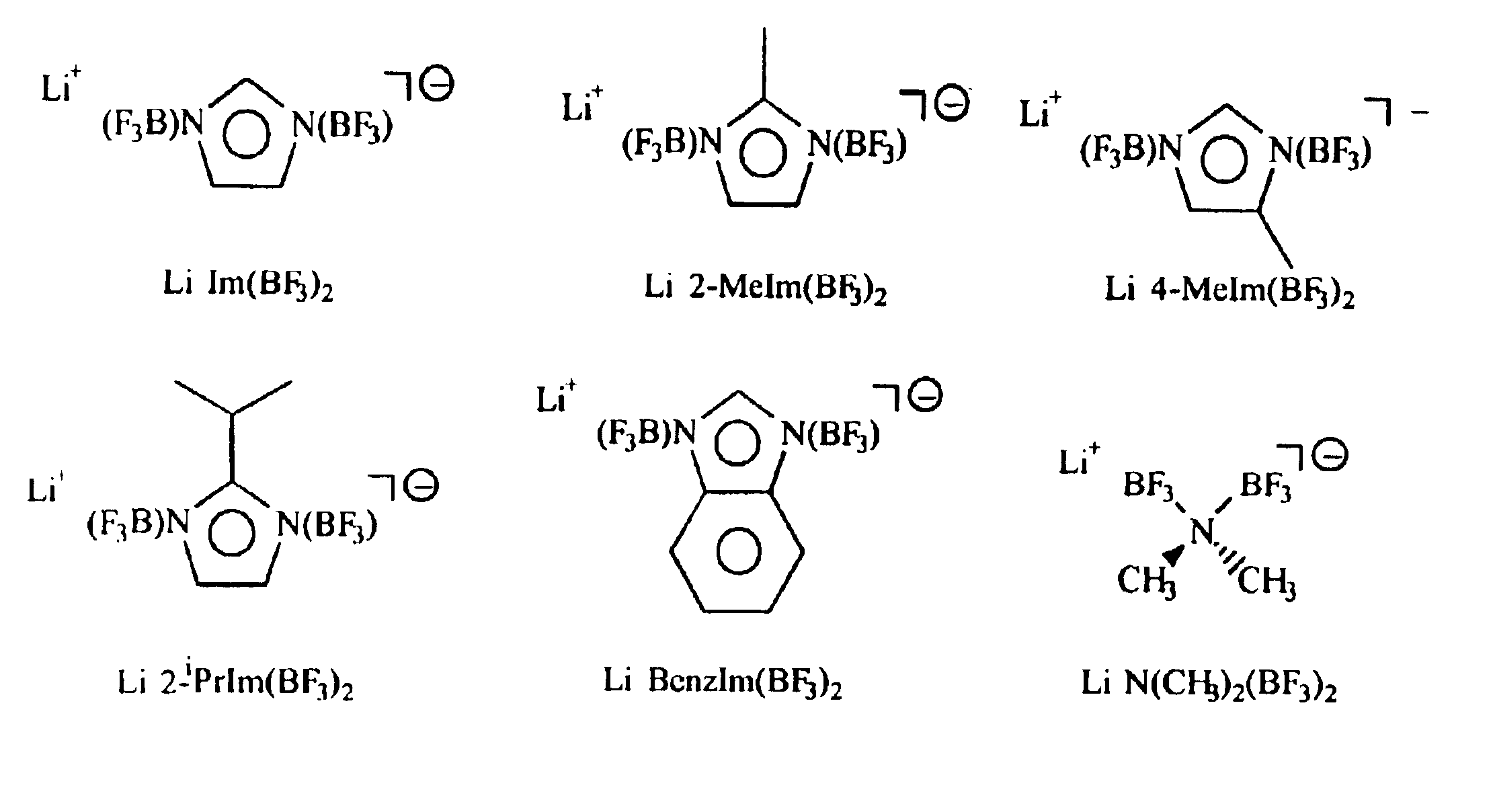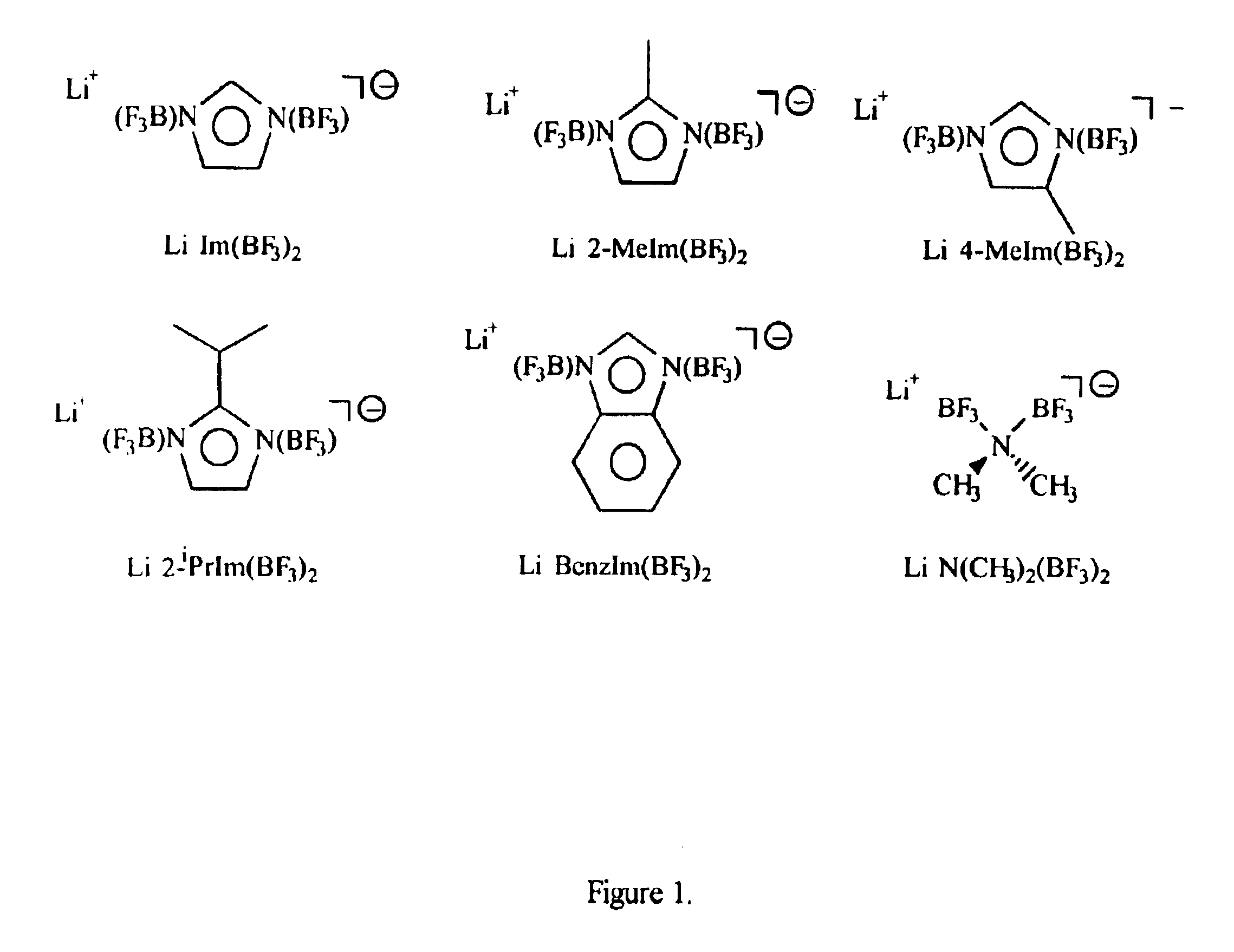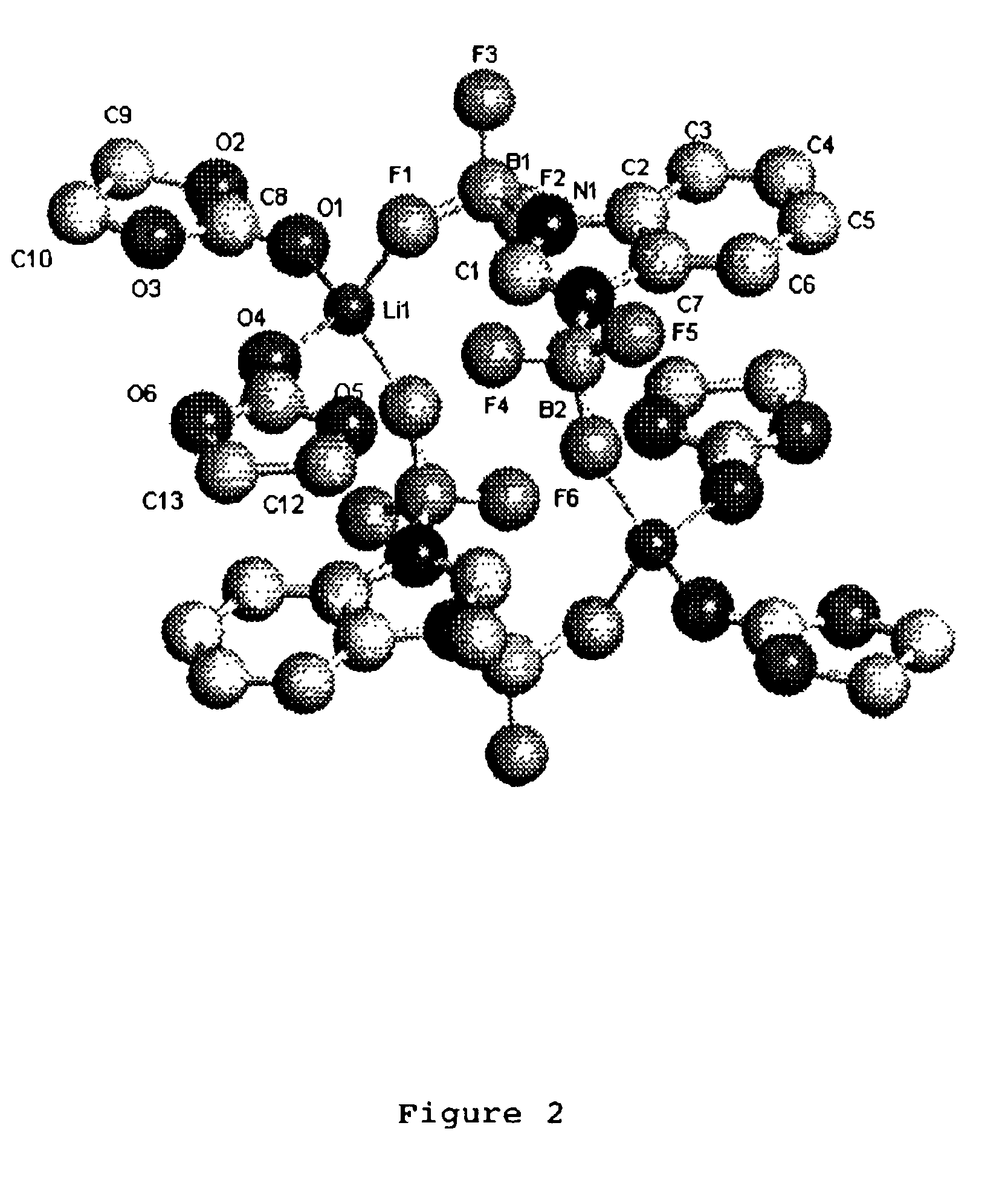Non-aqueous electrolytes for lithium electrochemical cells
a lithium electrochemical and non-aqueous electrolyte technology, applied in the direction of non-aqueous electrolyte cells, cell components, electrochemical generators, etc., can solve the problems of poor electrochemical stability of each salt, insufficiently meeting all cost, performance and safety requirements, and thermal instability, etc., to achieve good conductivity and thermal stability, easy preparation, and low cost
- Summary
- Abstract
- Description
- Claims
- Application Information
AI Technical Summary
Benefits of technology
Problems solved by technology
Method used
Image
Examples
example 1
Lithium Imidazolide (LiC3H3N2)
A slurry of imidazole (5.00 g, 73.5 mmol) in toluene (50 mL) was treated with 28 mL of a 2.65 M n-BuLi (74.2 mmol) solution in hexanes. This solution mixture was then refluxed for three days during which time the slurry became an off-white color. The slurry was then filtered over a medium glass frit and the solid was washed with two 10 mL portions of toluene and then dried under vacuum to yield an off white powder. Yield: 5.40 g, 99.4%.
example 2
Lithium bis(trifluoroborane)imidazolide (Li(BF3)2C3H3N2)
A slurry of lithium imidazolide (5.00 g, 67.6 mmol) in CH2Cl2 (100 mL) was treated with BF3(Et2O) (19.6 mL, 154 mmol) and the mixture was refluxed for five days during which time the slurry became yellow. The solid was then dried under vacuum to yield an off-white solid. Yield: 13.77 g, 97.1%. The solid was then dissolved in 40 mL of ethylmethyl carbonate and filtered. Dichloromethane was added to this filtrate and a precipitate formed. This precipitate was collected and dried under vacuum at 60° C. Yield: 8.63 g, 61%.
1H NMR (acetone-d6) δ 7.87 (singlet, 1H), 7.08 (singlet, 2H)
19F NMR (acetone-d6) δ−147.5 (quartet, JB-F=13 Hz)
Low resolution mass spectrum (Negative ion electrospray, acetone solution) Calculated for C3H3N2B2F6 203. Found m / z 203 [(M-Li)]−.
example 3
Lithium 2-methylimidazolide (LiC4H5N2)
A slurry of 2-methylimidazole (4.00 g, 48.7 mmol) in toluene (50 mL) at 0° C. was treated with 17.4 mL of a 2.8 M n-BuLi (48.7 mmol) solution in hexanes. This solution mixture was then refluxed for one day during which time the slurry became an off-white color. The slurry was then filtered over a medium glass frit and dried to give an off-white solid. Yield: 4.295 g, 100%.
PUM
| Property | Measurement | Unit |
|---|---|---|
| temperatures | aaaaa | aaaaa |
| temperatures | aaaaa | aaaaa |
| temperatures | aaaaa | aaaaa |
Abstract
Description
Claims
Application Information
 Login to View More
Login to View More - R&D
- Intellectual Property
- Life Sciences
- Materials
- Tech Scout
- Unparalleled Data Quality
- Higher Quality Content
- 60% Fewer Hallucinations
Browse by: Latest US Patents, China's latest patents, Technical Efficacy Thesaurus, Application Domain, Technology Topic, Popular Technical Reports.
© 2025 PatSnap. All rights reserved.Legal|Privacy policy|Modern Slavery Act Transparency Statement|Sitemap|About US| Contact US: help@patsnap.com



